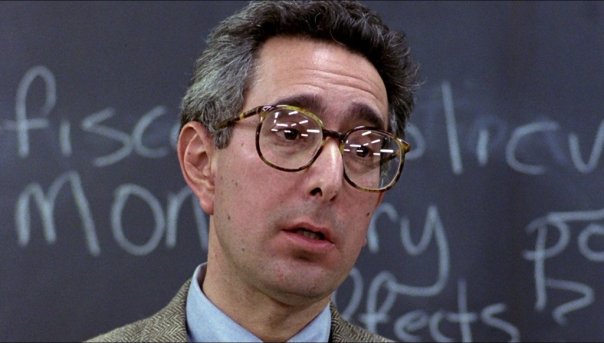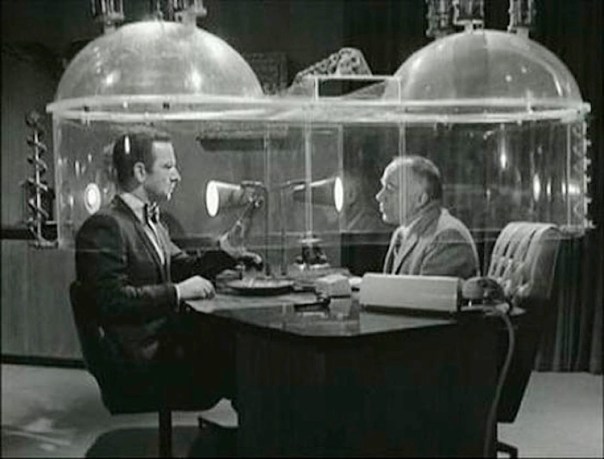Escape Room Narrative: Exposition Part 2
There are many ways to introduce an audience to a story. Mediums are not limited to any one method although there are usually a couple that are most effective.
Escape rooms are still going through some growing pains. Like video games, they are an interactive experience. Unlike most story heavy games, escape rooms have a set time limit, making it next to impossible to allow players the leisure to discover the story by interaction alone.
So what DOES make an effective exposition for an escape room? Let’s take a look at some of the methods currently used, the pros, the cons and how they can be taken to the next level. For consistencies’ sake, I am going to look at all of these methods using one of the most common escape room themes: The Mad Doctor/Scientist.

The GM Monologue
The Method: You walk into the escape room. A friendly and maybe slightly awkward game master greets you and processes your payment. They then lead down a hallway, stopping at a door. They turn to you, possibly taking out a sheet of paper, and begin to recite in a monotone voice:
“You are detectives who have been hired to find Richard Dobson’s brother, who disappeared after meeting a mysterious doctor for a sleep study. It seemed he was suffering from insomnia and this doctor, named Doctor Conway, had promised to cure it for him. You go to his office and are searching around when all of a sudden you discover a secret lab and the door closes behind you! Little did you know but Dr. Conway is actually insane and performing horrible experiments on all of his unsuspecting patients. He has done this to hundreds of patients for over twenty years. He believes that those with insomnia hold the key jump starting the brain and since his daughter is in a coma, he vows to discover this secret no matter what the cost. Now you are his latest victims. He will be back in an hour to finish you off. There will be five types of locks in the room. Let’s go over them now.”
Pros: This is definitely the most budget friendly option when it comes to delivering exposition. If you can’t afford high tech gadgets or a lavish set, why not utilize the game masters you are already paying?
Cons: So. Many. Cons. For one, this is a huge information dump. It is very rare that even I, the story junkie, will retain half of what is told to me by a game master. Are some of those facts clues to future puzzles?
Your game masters will also more than likely lack consistency. If your players happen to get the unenthusiastic game master who simply wants to get home as soon as possible, they lose out on the experience.

Especially if he speaks like this guy
More importantly, this keeps the players very much separate from the world of the game. I have had a friend describe hearing an intro like “the zombie apocalypse has happened” and retort “that must have been interesting”. Remember, your players are your characters. Reading their story to them does not involve them in any way. As a result they are disconnected from the rest of the experience.
If You Are Going To Use: Let’s face it. Not everyone can afford all the bells and whistles of an immersive experience. More often than not, a designer or owner will be forced to use the limited resources they have.
So if you are going to use a game master to introduce the story, make sure you can get animated individuals who are passionate about delivering an experience. Ditch the recitation. Instead, have your game master take on a role. Have them treat the players as characters, not customers.
The exposition is the key opportunity to introduce your players to the game world and make them feel a part of it. It makes all the difference in the world if you can use your game master to make this transition as natural as possible.
For instance, let’s take the above example. If a game master led me to the escape room door, turned around and urgently said “You’re here, good. I figured you would be…I don’t know, I figured you’d look more like detectives. Okay, whatever, listen. My brother Robert’s been missing for three months. The cops…they’ve given up. They say he ran away but…I just can’t believe that. Before he disappeared…he mentioned getting his insomnia treated at this doctor’s office…it could be nothing, but I’m desperate…Please (hands over a photo of Robert), please find him.” I would be far more engaged. It gives just enough information while still retaining some of the mystery. Let the rest of the game tell the full story.
Pre-recorded Video- Pre-Room
The Method
You walk into an escape room lobby. The GM gives you a (hopefully) friendly greeting, processes your payment and leads you down the hallway to a small room which holds nothing but a video screen and a small bench.
The GM instructs you to watch the video before shutting the door. A moment after the door shuts, a video is loaded. A narrator’s monotone voice chimes in over a montage of disturbing images.

Hopefully not this.
My brother, Robert Dobson, disappeared over a year ago. The police have no idea what they are doing. I’ve heard you are the best PI’s around so I’m hoping you can help me out.
The last time I spoke with Robert he mentioned going to this doctor’s office. He’d been having problems sleeping. This doctor said he could help. I don’t know if he ever made it to the appointment…but he disappeared shortly after telling me. The police refuse to go there for some reason. You are my last hope.
Check out the doctor’s office. Find evidence of where my brother is. And please, be careful…I’ve heard rumours about this place…
The image then distorts and fades out accompanied by creepy music. The GM walks back in and ushers you to the room.
Pros
On the plus side, a pre-recorded video is going to provide a more consistent experience for your players. A video only has to be recorded once and players are guaranteed the same performance each time. It is not dependent on how enthusiastic their GM is.
A well produced video can also set the tone and atmosphere for the players and get them in the right mood for their experience. Spooky music and disturbing images will put them on edge and give a sense of tension a horror room needs. Jaunty music will indicate a light hearted romp. Even the script can set the tone. Is it told like a fairy tale? A news report? A quick and panicked message? Everything should be considered.
Cons
A video runs the risk of another info dump. Again, knowing what information NEEDS to be conveyed to the player versus what information is secondary is a huge error I see in many escape room videos.
Believe it or not, players are going to be less forgiving of a poorly produced video than they are an unenthusiastic GM. Bad editing and cheap techniques stand out. We often end up giggling at the goofy edits than we do pay attention to the actual exposition spouted at us.

Only this guy seems to have gotten away with it. And you don’t want to be this guy.
As much as it sets up tone and start the process of immersing players, it also still keeps them outside of the experience.
If You Are Going to Use:
Opening videos are one of the most common escape room tools for exposition used as of the writing of this post. It’s easy to see why and there is no reason why a facility should not use them. However, there are factors to keep in mind.
First, keep it short. Even the best produced videos get tuned out if they are anywhere over three minutes. Players are there to play. They don’t want five to ten minutes of cut scenes while they wait for the action to begin.
Invest money into it. This one is difficult if you are lower budget, but the impact on the player experience will improve that much more if the video is well produced. Hire a local actor (or that enthusiastic friend who is the life of the party), get an animator or graphic designer for the visuals, and get a video editor to piece it all together. Treat that video like you would the rest of your escape room, not as an after thought recorded in your basement.
…unless recording in your basement is integral to the experience of course. But that would be weird.
Pre-Recorded Video/Audio- In-Game
The Method: After paying for your room, the GM leads you into a dimly lit office. You are surrounded by furniture with all sorts of fun looking drawers and pictures on the wall that surely hold some significance.
A voice suddenly crackles overhead as though from a voicemail.
“Hi…my name is Nick Dobson…I need your help…my brother, he disappeared over a year ago…the police have given up but I just can’t. I hear you’re the best in the business. His name is Robert…
Your friends begin to search the room as the voice continues.
The last time I saw him he was talking about going to this doctor…I don’t know much about him, there seems to be almost no information out there. I have a really bad feeling about him…They won’t return my calls. The cops won’t check it out…why?
Someone has now found a lockbox. Three of your team are shouting combo possibilities across the room based on the posters on the wall.

My team.
It’s a long shot but it’s the last one I have…please…I need you to visit this doctor and find any information you can on Robert. They seem pretty secretive so I’ll need you to get there by less…conventional means…all I know is the office code is based on his dog’s life…good luck…
Pros
Having your video and/or audio in the room itself heightens the immersion of the game. It’s far more natural to hear a voicemail as you sneak into a doctor’s office than to have a video narrate the full story at a group of sitting players.
Cons: Players want to play. Not only do they want to play, but they are up against a timer. The moment they are given access to the puzzles they are going to run for them and tune out whatever exposition is playing out.
If that exposition happens to contain a vital clue to solving a puzzle, you are even more doomed. There have been a few times when my team and I have suddenly looked at each other and wondered “Wait…what did he say again? Something about a dog? Or did he mean frog?” because we were too distracted to pay attention to begin with.
Poor acoustics are also a common trait in escape rooms. You could have the most incredible voice actor come in to record your award winning intro script, but if players cannot hear it there really is not much point.

If You Are Going To Use: Believe it or not, when using pre-recorded video at the beginning of the game I actually prefer if I am barred from doing the room initially. It forces me and, more importantly, my team to stop and listen to the story.
Take the previous scenario. Rather than barging straight into an office, imagine walking up to the door of a building and then hearing the voicemail play. At the end of their speech they then reveal they know where the key to the entrance is hidden. It’s a much more natural entryway into the game, giving enough mystery without revealing the entire set.
If you have a small facility however, building a multi-room set just for the sake of setting better atmosphere may be difficult and costly. The simplest method I have seen to get players to pay attention is to literally blindfold them while the narration plays. It’s worked about half the time with us. Inevitably, my teammate Errol will take off his mask before the time is up and start searching the room.
The next best option? Let your narration be nothing but flavour text. It’s a reward for those that want to listen but it does not hamper those that simply want to get to some puzzle solving. And for the love of all that is holy, get yourself a decent sound system.
WOW This is longer than I thought it would be. I think it’s time for a Part 3 for the last methods! Stay tuned!
Posted on March 13, 2018, in Gaming and tagged escape rooms, narrative. Bookmark the permalink. 2 Comments.
Errol would find me being very grumpy with him. You’ve skipped over the other option which I’ve seen quite often which is to have the light levels low in the room and ensure that you’ll get little joy from the video.
A couple of times you also mentioned “if there’s critical information in the video”. There shouldn’t be critical information in the video IMO. That’s effectively a destructible puzzle. I don’t mind useful info but if it’s critical it should be in the hour long game and not something you can only hear once and then lose your chance.
re: starting immersion outside the room with the GM. It’s possible if the GM is good and the story aligns itself to it. I played a timetravel room recently where the GM said that you’d been brought here under false pretences and that the escape room was just a cover. I think that’s probably a valid option in more rooms than currently take advantage of it.
Pingback: Escape Room Narrative: Exposition Part 1 | Thoughts from the Test Chamber